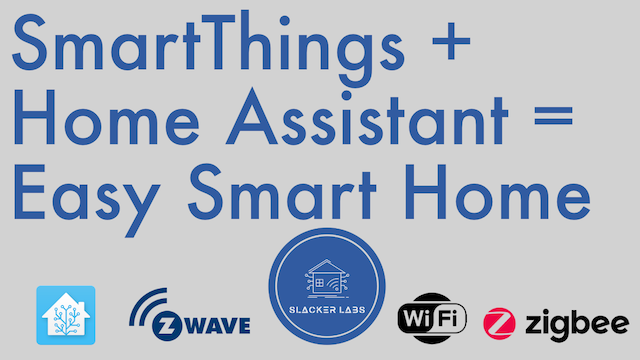Try Home Assistant While Running SmartThings

Getting started in Home Automation can be risky. First, there is all the smart home protocols like Zwave, Zigbee, Wifi, RF, X10, and no clear winner. Second, everyone these days seems to be building a hub or platform to control your Smart Home Tech. Thankfully there are lots of platforms that support most if not all of the Internet of Things protocols, so choosing one just requires looking at the pros and cons of each of the dozens of platforms to make a decision on which one is perfect for you…simple right?
If you are a slacker like me like me you may have zeroed in on Samsung’s Smartthings from the start. For Home Automation in a world fraught with risk it ticks all the boxes for an acceptable foundation. Backed an organization committed to the platform. Supports multiple protocols. Easy to add Devices. Easy to Automate Devices. And it even has some level of customization. But if you want a true smart home, one that anticipates your needs without direct input, I think you are going to need something a little more adaptable.
Don’t get me wrong, Smartthings is a good platform and depending on your ultimate goal for your smart home may be the prefect solution. But if you want a platform that can handle complex automations that use a diverse set of data points to make a decision you are going to need something different. One of those choices is Home Assistant.
Getting started with Home Assistant isn’t as easy as trading $100 for a hub, plugging it in, and connecting your devices. But, despite what you may have heard, it’s not much harder. Granted like everything in life there are multiple paths to a Home Assistant powered smart home and some are more for those that like tinkering with computers, but if you are running Smartthings today its as easy as it gets thanks to a built in integration.
All you need is a device to run Home Assistant like a Raspberry Pi, and SD card to put the software on, some software to flash an SD card. And best of all, you can do all of this with out changing a single thing in your current Smartthings setup. This means you can try out Home Assistant risk free. Ok, you still have to invest some cash for a Raspberry Pi, and SD card. But if you end up not liking Home Assistant you could always turn that Raspberry Pi into a hundred different of things.
So if you are using Smartthings today and you are curious about Home Assistant or thinking of migrating to Home Assistant, check out the video below. I walk through setting up Home Assistant and integrating Smartthings, and it only takes 30 minutes or less.
Until next time, Go Automate the Boring Stuff.
